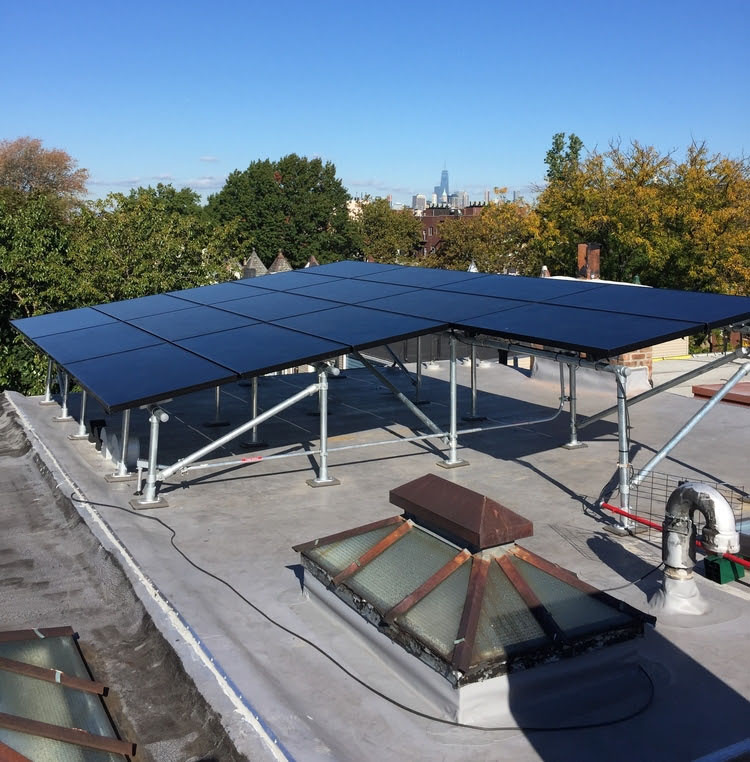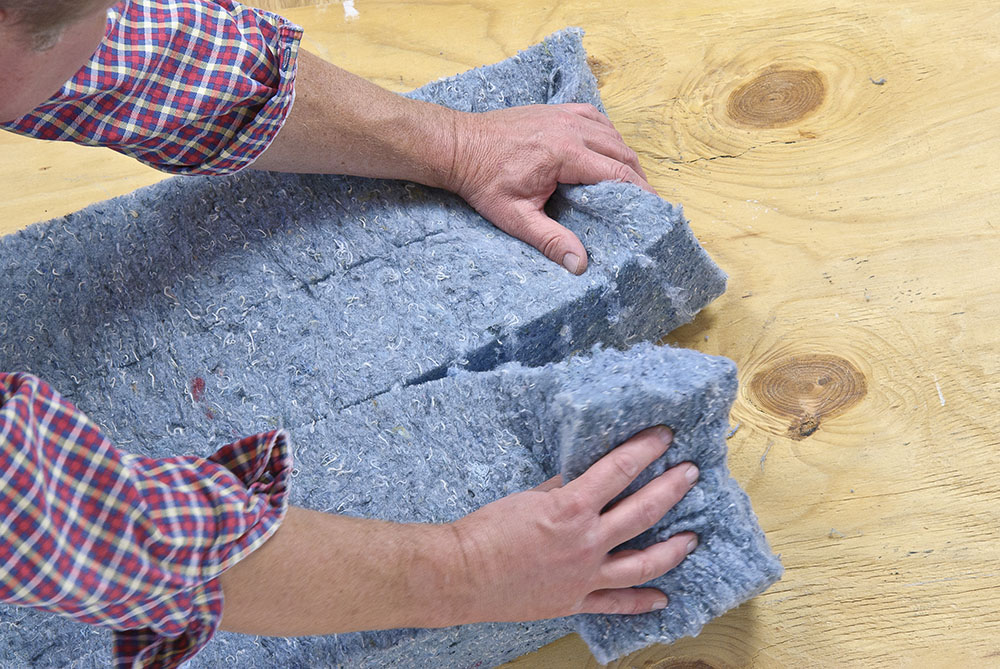How to Make Your Home More Energy-Efficient
Whether you’re more concerned with saving money or with saving the world, there are many reasons to improve your home’s energy efficiency. Even in a historic Brooklyn townhouse, with its drafty old windows and pre-war fixtures, there are dozens of things you can do to keep your bills low and your carbon footprint small. We asked…

Whether you’re more concerned with saving money or with saving the world, there are many reasons to improve your home’s energy efficiency. Even in a historic Brooklyn townhouse, with its drafty old windows and pre-war fixtures, there are dozens of things you can do to keep your bills low and your carbon footprint small.

We asked four of our Brownstoner Services professionals for their top tips on how to make your home more energy-efficient. Some of them are huge structural changes to keep in mind during new construction or renovation, some you could accomplish in an hour over the weekend.
Tip from Lonnie Coplen, ARC Advanced Energy Panels
Insulate your windows.
Historic windows are great candidates for our window insulation, because the replacement costs themselves can be so high. AEP’s product has a higher air sealing and insulating rating than most replacement windows, and they will dramatically reduce noise transmission while improving comfort and eliminating condensation on existing glazing. We like to call AEP window insulation our “climate warriors” because they are such a powerful solution to heat loss at windows at a fraction of the cost of window replacements.

Tips from T.R. Ludwig, Brooklyn Solar Works
Add Solar Panels to your Brownstone or Row House
There are a host of incentives for putting solar panels on Brownstones and Row Houses in NYC. In some cases our customers are getting 95% of their solar systems paid for by a combination of federal, state and local incentives. For the average brownstone, we see between a 4-6 year payback and some are shorter. We have developed a solar canopy which will power even the most power hungry brownstones, though in many cases even a small system can power all of a brownstone. If you combine energy efficiency and solar it is a winning combination because the more efficient the home, the smaller the solar system you need to power it. Once the system is live it will produce electricity for at least another 25 years.
Get a free energy audit from Con Ed.
This will help you identify areas for improvement, and show how efficient your heating and cooling is compared to your neighbors.
Seal your windows and insulate your home.
By far this is the lowest hanging fruit for efficiency. For relatively little cost, you can save by making your building envelope more efficient.
Change out all incandescent bulbs to either CFL or, preferably, LED.
LEDs consume a fraction of electricity of incandescent bulbs and last much longer.
Switch from oil to gas, or look at mini-split heat pumps.
Heat pumps can be retro-fit to your existing fuel source.
Get a programmable thermostat.
Intelligently heat and cool your home, and spend less money on heating and cooling when you don’t need it.
Tips from Bhavesh Shah, Open Studio
Use repurposed materials in the building process.
Natural cotton fiber insulation, made from 100% recycled used denim, can be used to insulate the interior and exterior of the house.
If you’re renovating, consider installing radiant heating.
Radiant heating is where, instead of having heating units right by a window, there are heating pipes under the floor. Hot water running through the pipes heat from below, and the heat rises from the floor up. Radiant heating is more energy-efficient, tending to use 30 to 35 percent less energy than traditional methods.
Tips from Mickey Bennett, Solar One Energy
When it comes to energy efficiency, it can be tough to identify opportunities for efficiency in 19th-century brownstones. Here are some ideas unique to those structures.
Replace your electric water heater.
If you have an electric water heater, replace it with a gas water heater. Costs will be half of the electric one. For most tank-type (e.g.: 60-gallon) hot water heaters, purchase a hot water heater insulation blanket of R-11 or higher. That will conserve the heat in the tank and will lessen fuel required to heat the water. If it is time for a new hot water heater (generally after 10 years) then consider a new heat pump water heater or a tankless coil wall-mounted hot water heater. Both are highly efficient and keep the heat from your energy from going up the flue.
Insulate your roof hatch.
I have been in many brownstones where the hatch is original and has no sealing around it or insulation in the cover. Some quick DIY work could include cutting a piece of cryanoacrylate insulating styrofoam. It is available at Home Depot, and it is usually blue with closed cells that make it very efficient as an insulation. Cut them with a utility knife to fit in the hatch cover and use construction adhesive in a caulking dispenser to glue one or two pieces in place. Get rubber weather stripping and glue or staple it to the hatch rim. That will eliminate air infiltration into a hall closet and will keep the cold from the hatch from entering the home.
Replace old appliances.
If you have done the CFL or even better the LED replacing, now it’s time to consider the big electricity users in a brownstone: the central air conditioning, refrigerator, dishwasher, washing machines and dryers.
In general, a ten-year-old refrigerator will be two to three times less efficient than today’s models. Today’s are made with better insulation and smaller, more efficient compressors. They run less often, they’re quieter, and they use less than half the power of an older model. Dishwashers, dryers and washing machines follow the same type of savings. More efficient motors and better designs make today’s appliances much more efficient (and quieter).
Central air conditioning with today’s more efficient heat pump units like the Mitsubishi City models enable high-pressure ducts to be installed in brownstones while still retaining all the charm and detail. If it is a new system, you may also be able to eliminate your old heating system and gain some basement space, because these units mount on the roof. The heat pumps are great for air conditioning and heating and they are super efficient.
Install solar energy and battery systems.
Even an inefficient home can benefit from Solar Energy on the roof of a brownstone. You may read that you should do the efficiencies first, but not in New York. Here with our roof sizes, you will not be putting in more solar then you will use.
For example, a brownstone on Union Street we looked at last week could fit 5.7 kilowatts of solar. That will cover just over 50% of their total electric bill . They could become 100% more efficient with their electric use and still not have more solar than they need. Most brownstones can fit 3.5 to 7 kilowatts of solar power on their roof.
In New York, FDNY rules for paths and for space around skylights eliminate a lot of useful roof square footage we could use for solar. So most homes can put in solar now, with the 30 percent investment tax credit in place (ending in 2016) and the 20 percent city tax abatement program (ending in 2017).
Solar with a PV/Battery hybrid system can also provide safety and power during power outages. Sonnen-Batterie is a German firm with over 100,000 batteries in solar homes across Germany.The batteries recharge during the day from solar and at night from the grid, using lower cost non-peak electricity.
Related Content
Energy Efficiency Q&A
Renewable Energy Professionals
Window Insulation Tips
Are you a Home Services Provider? Want to share your expertise with the Brownstoner community? Click here.
Businesses Mentioned Above
[blankslate_pages id=”d564ba9e6a3a78, d54da287b7c26a, d566b41bf07892, d56703eb56186e” type=”card” show_photo=”true” utm_content=””][/blankslate_pages]






What's Your Take? Leave a Comment